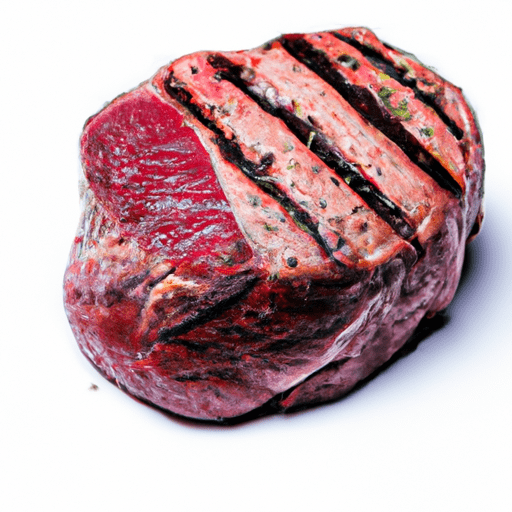The Perfect Cut: Exploring the World of Beef Tenderloin Steaks
When it comes to premium cuts of beef, few can rival the exquisite tenderness and succulence of the beef tenderloin steak. This prized cut, also known as filet mignon, is a true indulgence for meat lovers. In this blog post, we delve into the fascinating world of beef tenderloin steaks, exploring their taste, culinary uses, nutritional value, and a glimpse into their intriguing history.
A Taste of Luxury
Beef tenderloin steaks are renowned for their unparalleled tenderness, melt-in-your-mouth texture, and subtle, buttery flavor. As one of the leanest cuts of beef, they offer a delicate and refined taste that appeals to even the most discerning palates. The marbling of fat within the muscle adds a touch of richness, enhancing both the flavor and juiciness of the steak.
Culinary Versatility
Thanks to its delicate flavor, beef tenderloin steak lends itself beautifully to a variety of cooking methods. Whether you prefer grilling, pan-searing, or broiling, this cut is incredibly versatile. Its tenderness makes it forgiving to cook, allowing for a wide range of doneness levels, from rare to well-done, to suit everyone’s preferences.
With just a sprinkling of salt and pepper, you can truly let the flavor of the beef shine. For those seeking to elevate the experience, simple herb rubs or marinades complement the beef tenderloin’s subtle taste. Moreover, it pairs exceptionally well with flavorful sauces, such as mushroom or red wine reduction, offering a harmonious balance of flavors.
Nutritional Powerhouse
While beef tenderloin steaks are undeniably indulgent, they do provide a plethora of beneficial nutrients. A serving of beef tenderloin (about 3 ounces) offers an excellent source of high-quality protein, supplying the body with essential amino acids to support muscle growth and repair. Additionally, it contains vital minerals like iron, zinc, and selenium, which play crucial roles in various bodily functions, including immune support and cell regeneration.
It’s important to note that beef tenderloin steaks are relatively low in fat, especially when compared to other cuts of beef. This characteristic makes it an ideal choice for those seeking a lean protein option while still indulging in a luxurious steak experience.
A Glimpse into History
Beef tenderloin steaks have a rich history dating back centuries. The tenderloin, located in the central part of the beef carcass, was considered a prized cut fit for royalty. In fact, during the Renaissance period, it was often reserved exclusively for kings and nobles due to its superior tenderness and flavor.
Over time, this luxurious cut transformed into the ubiquitous filet mignon that we know today. Its popularity spread throughout the world, becoming a symbol of fine dining and decadence. Today, beef tenderloin steaks continue to grace the menus of upscale restaurants and are a favorite choice for celebratory meals.
A Cut Above the Rest
In summary, beef tenderloin steaks offer a tantalizing experience for any meat lover. Their unmatched tenderness, delicate flavor, and culinary versatility make them a true indulgence. Not only are they a delicious treat, but they also provide valuable nutrients and trace minerals. And let’s not forget the rich history that surrounds this cut, adding an air of elegance to any dining occasion.
Whether you’re planning a romantic dinner or simply want to savor a perfectly cooked steak, beef tenderloin is sure to impress. So go ahead, fire up the grill or heat up the skillet, and prepare to embark on a culinary journey like no other with beef tenderloin steaks.
Sure! Here are some interesting facts about beef tenderloin steaks:
Origin: Beef tenderloin steaks come from the tenderloin muscle, which is located near the spine of a cow. This cut is highly regarded for its tenderness and is often considered one of the most premium cuts of beef.
Common uses: Beef tenderloin steaks are commonly used for grilling, broiling, or pan-searing. They are often served as a standalone meal or used in recipes like Beef Wellington, steak au poivre, or filet mignon. Due to their tenderness, they are also sometimes used for raw preparations like carpaccio or tartare.
Nutritional benefits: Beef tenderloin steaks are a good source of high-quality protein, vitamins, and minerals. They are particularly rich in iron, zinc, vitamin B12, and selenium. However, it’s important to note that beef tenderloin steaks are also high in fat, so they should be consumed in moderation as part of a balanced diet.
Unique properties: The tenderness of beef tenderloin steaks is due to the fact that this muscle is not weight-bearing, which means it doesn’t have to support the cow’s weight during physical activity. This results in a more tender texture compared to muscles that are used more frequently.
Historical significance: Beef tenderloin steaks have been enjoyed for centuries and have a long history of being considered a prized cut of meat. In medieval times, beef tenderloin was often reserved for nobility and the upper class due to its tenderness and flavor. Today, it continues to be a sought-after cut for special occasions and fine dining experiences.
Remember to cook beef tenderloin steaks to your desired doneness, as they are commonly enjoyed from rare to medium-rare to fully cooked.




Use the share button below if you liked it.
It makes me smile, when I see it.